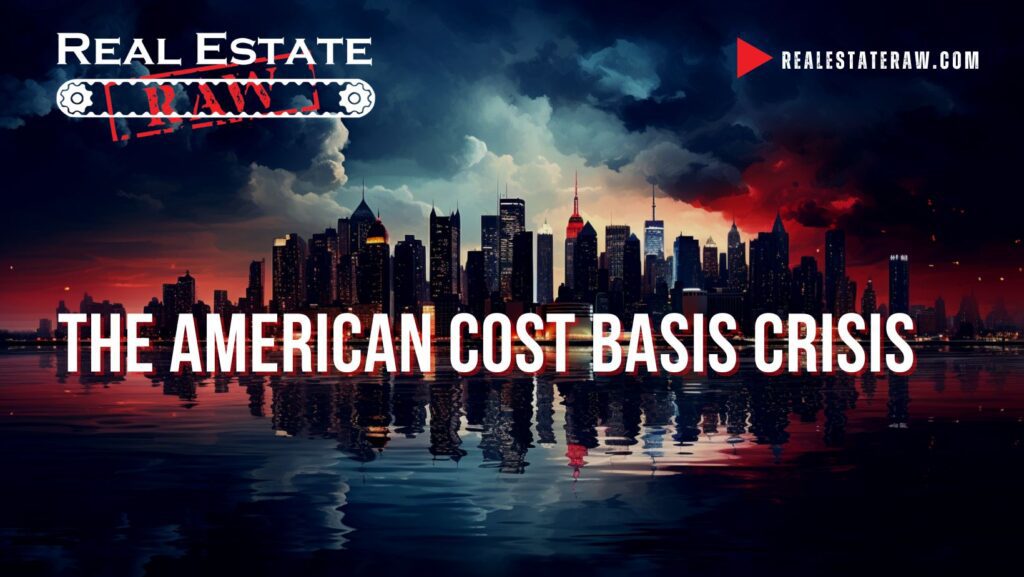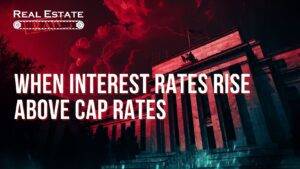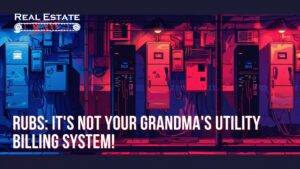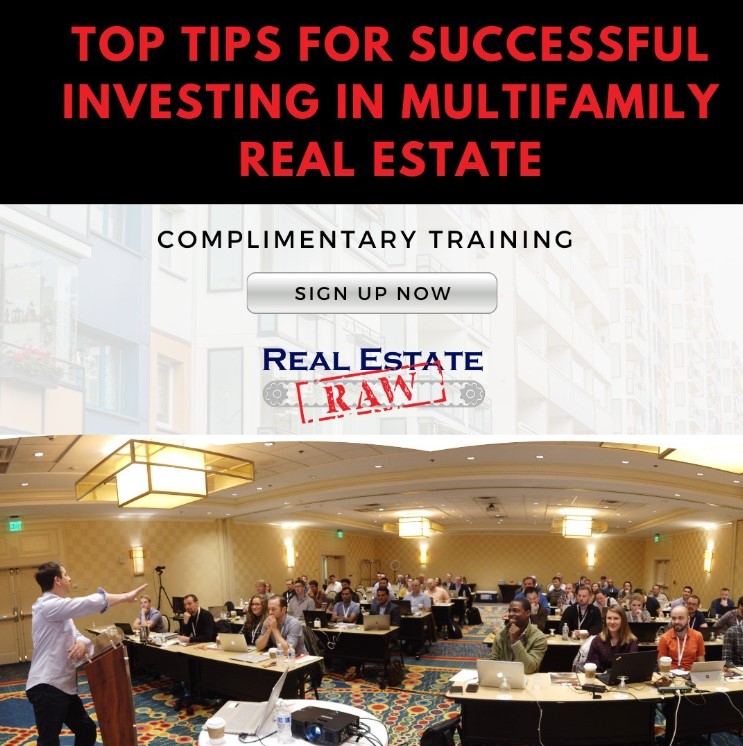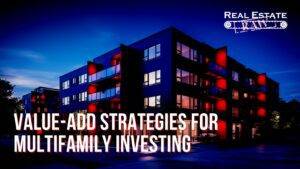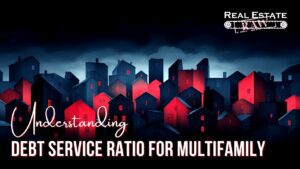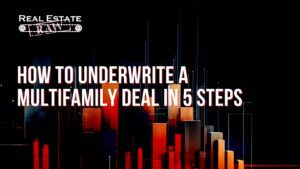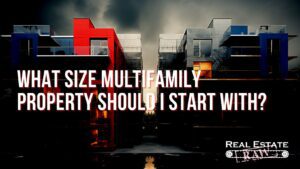The housing market is a complex and ever-changing beast. It can be difficult to predict what the future holds, but one thing is for sure: the next housing crash is coming. The question is, what will cause it?
Infrastructure: The Sleeping Giant
In this article, I will argue that the next housing crash will be caused by aging infrastructure. As America’s real estate ages, it will become increasingly expensive to maintain and repair. This will lead to a decrease in property values and a surge in foreclosures.
I will also discuss the three converging market conditions that will ultimately result in the upcoming market crisis:
- The Cost Basis Crisis: The cost of replacing the infrastructure of buildings will outweigh the value of the property.
- High interest rates: High interest rates will make it more difficult for borrowers to afford to buy homes.
- High maturity exposure: A large number of loans are coming due soon, and many borrowers will not be able to refinance them at favorable rates.
I will then provide some tips for how you can prepare for the potential for a housing market downturn. Here are some of the key takeaways from this article:
- The next housing crash is coming, and it will be caused by aging infrastructure.
- There are three converging market conditions that will ultimately result in the upcoming market crisis.
- Make sure to inspect older buildings thoroughly and deduct all capital expenses from the purchase price.
- Be very careful about buying older properties at a low cap rate.
- Plan on a longer than expected hold/operate time frame.
- Make sure you get debt that is cooperative with a longer-term hold period.
- Creative financing for multifamily and commercial real estate will be a major solution to the lack of financing for distressed assets.
- Learn to analyze deals at a high level. Your portfolio will depend on it!
Interest rates have nothing to do with the next housing crisis. Interest rates come and go but the plumbing is here to stay. America is facing a new type of housing crisis. One that has never existed before. I am calling this new market cycle the American Cost Basis Crisis.
As a 20-year owner operator in the multifamily space, I can tell you that everyone is currently focused on the wrong issue. The next major housing crash is not going to be due to interest rates it’s going to be due to infrastructure. Aging real estate in the American economy is a “sleeping giant”. Prices and interest rates go up and down over time, but the plumbing just keeps getting older.
The Cost Basis Crisis Explained
The concept of cost basis for real estate is arrived at by taking the original purchase price of the property, plus any closing costs and capital improvements (renovation costs), minus any depreciation that has been claimed. Basically, it is the cost of the total project.
If the cost basis or total money invested is more than what the property will be worth after the work is done, you have a problem. We describe the value of a property after it has been renovated as the after-repair value (ARV). If the cost basis is greater than the ARV, you must lower the purchase price to make money (generally speaking).
My prediction is that multifamily and commercial properties that were built before 1980 are likely to need major infrastructure improvements at major costs soon/now. Future buyers will be forced to lower their offering prices to be able to buy at a low enough price to include the total cost of replacing (not repairing) the main components of the property such as plumbing, sub-flooring, wiring, roofs, and parking lots just to name a few.
This lowering of the prices will result in the next housing market downturn but there may also be a lot of opportunities for those who know how and what to analyze. Buying right will be the key to success in this next multifamily market cycle. Tips at the end of this article.
A Negative Trifecta
A trifecta is when you guess all the of the 1st, 2nd, and 3rd winners of a race in order. It also means a triplet of successful events. I am suggesting three market conditions that will bring about the next housing crisis. These three factors are-
- The Cost Basis Crisis
- High interest rates
- High maturity exposure
As I have described already, the market will see a devaluation do to the cost of replacing the infrastructure of buildings. This will be exacerbated by the high interest rates we see in the market today (and for the foreseeable future) plus the large number of loans coming due soon (maturity exposure).
As (most) loans mature in this market cycle they are resetting at a highly increased interest rate. More than double in many cases. Simple math will tell you that if the interest rate goes up so does the annual mortgage payment. If the mortgage payment goes up the debt service coverage ratio (DSCR) goes down. Now the owner needs to raise the rent just to maintain the value of the property not to increase it.
DSCR = Net Operating Income / Annual Mortgage Payment
The issue we have seen in late 2023 is that the interest rates went up faster than the revenue could be increased and a subsequent decrease in the DSCR. This means that that buyers will have to pay less for the property or put down much more money (lower loan to value) to get the same DSCR required by most traditional lenders (1.25 to 1.3).
The high level of loans maturing in late 2023 means that a lot of borrowers are going to need to exit the existing deal in some manner. They will need to refinance the property, sell it/pay off the loan or foreclosure.
Selling, Refinancing, and Foreclosure
Selling and refinancing are essentially the same math equation. When you (an owner) refinance a property, you are “selling it” to yourself. If you are actually selling the property, then you are selling to someone else.
I make this simple distinction because when an owner goes to refinance their property, they are subject to the same DSCR equation. For this refinance they will need to show that their property is producing an NOI that supports the DSCR of about 1.2 – 1.3 (for most traditional financing). This is one thing when the interest rates are 3.5% and a dramatically different issue when the rates are well over 7%.
If an owner wants to sell in a high interest rate market, their buyers will have to “pay less or borrow less” to get the deals done. I vote to pay less personally.
If an owner wants to refinance a low interest rate loan into a higher interest rate, they will receive less cash out from the refinancing and if the rates are high enough (Low DSCR) the owner will not be doing a “cash out” refi but a CASH IN refi! This may result in a capital call if the owner has investors or partners.
Cost Basis Again
Back to this issue for a moment. I have a more detailed prediction here. Lending escrow requirements will be the actual “tip of the spear” that begins the Cost Basis Crisis. After a few high-profile cases of buildings collapsing and causing serious damage, I predict that the building inspectors going forward will be very sensitive to aging infrastructure of assets. Especially buildings with lots of people living in them.
This will have the residual effect of causing the lender to create a higher capital expense escrow when originating the loan. The inspector will create what is known as a property condition assessment (PCA). This report will detail the condition and needed upgrades to the property. The lender will likely require the borrower to escrow this amount of cash with them until the repairs are completed.
Recent events such as the Surfside condominium collapse in Miami and the Davenport apartment collapse will likely be fresh on the minds of property inspectors. As the properties age they will be inspected accordingly. If these inspections cause a higher amount of cash to be escrowed at closing this will lower the returns produced by the investment or the buyer will have to pay less for the property to begin with. Cost basis.
Flight to Quality
I believe we will see a new phenomenon in the upcoming market cycle that we have never seen before. When the interest rates stabilize, I think that the market will see substantial increases in the value of newer buildings and a steep decline in the value of older ones. Traditionally all real estate has gone up and down (more or less) in lockstep value. This may not be the norm over the next decade.
I also think that eventually the government will begin to sponsor the renovation of these older buildings in exchange for rent control. Left to the private market, there isn’t any foreseeable profit in buying buildings that will cost more to own than they will ever make in revenue or appreciation. They will eventually be “land value” only.
The government may need to intercede to bring “value” back to that asset class. This could be in many ways all having a major impact on the housing market. In my opinion there would be two most likely ways the government would intervene. One would be by creating funds or grants to directly pay for the refurbishment of the old buildings or they could give massive tax incentives to builders who could then take down the old buildings, creating new properties. This creates new issues though.
Affordability. This is a huge issue in today’s housing market. The term “affordable” is typically used to describe rents that are no more than 30% of the average median income (AMI) for an area.
There are two types of affordable housing properties. Affordable housing and “organic” affordable housing. Traditional affordable housing is newly built, and the rents are controlled in some way based on the AMI. Organic affordable housing is a property that has become affordable due to its age and condition. To replace organic affordable housing with newly built affordable housing would be a major government undertaking.
Conclusion
The American Cost Basis Crisis is a serious threat to the stability of the housing market. As aging infrastructure becomes increasingly expensive to maintain and repair, property values will decrease, and foreclosures will surge. This could lead to another housing crash similar to the one we experienced in 2008.
While the future of the housing market is uncertain, there are some things you can do to prepare for a potential downturn. By following the tips in this article, you can protect yourself from the buffet of a turbulent market.
If you want to avoid the future housing crash and need up to date tips and info on multifamily investing check out my site www.realestateraw.com and join my Facebook group Real Estate Raw for Multifamily Investors!
Best of luck!
Bill Ham

